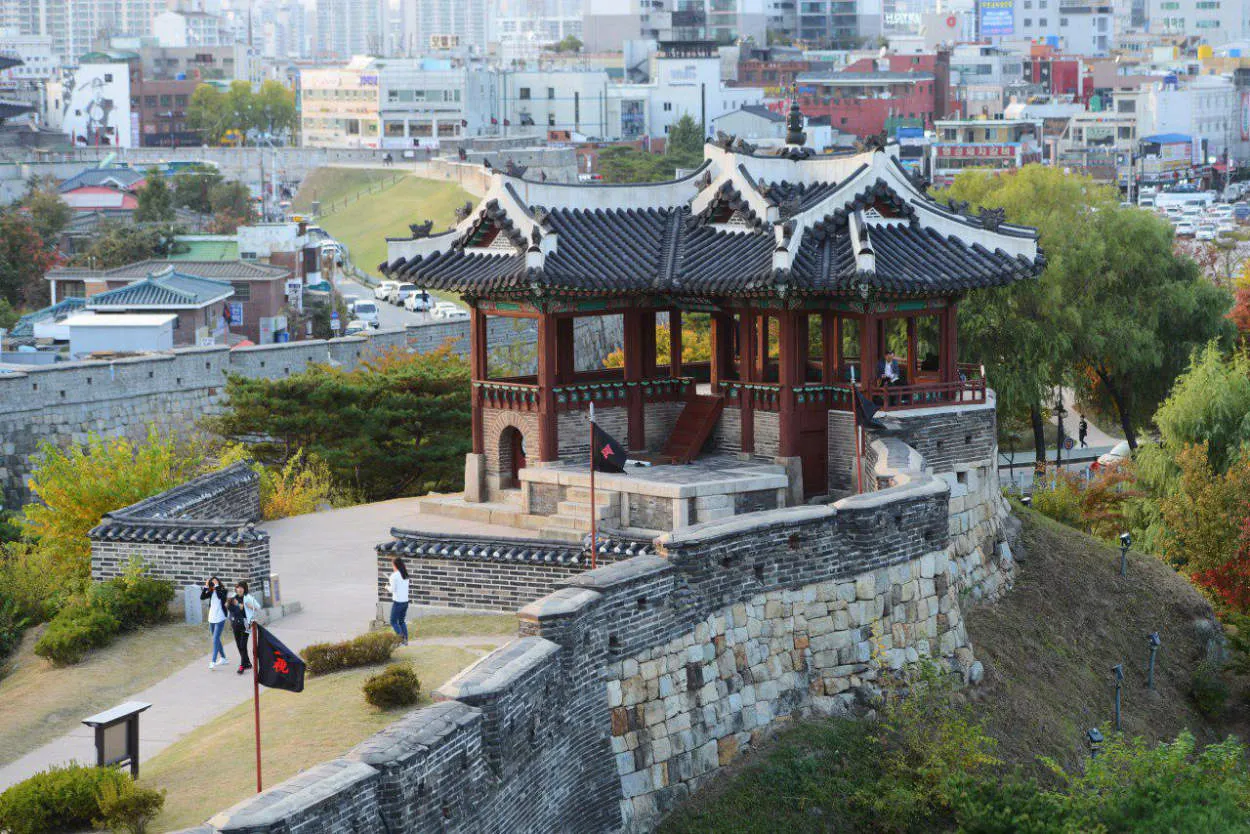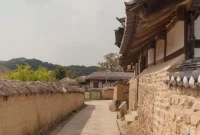Suwon’s Hwaseong Fortress, a remarkable UNESCO World Heritage Site, offers a captivating glimpse into South Korea’s rich cultural history. With its majestic walls, ancient architecture, and stunning surroundings, this fortress stands as a testament to the country’s architectural prowess and is a must-visit for history enthusiasts and travelers alike.
Discovering Suwon’s Impressive Architectural Gem
Suwon’s Hwaseong Fortress, a UNESCO World Heritage Site, stands as a testament to the city’s rich history and architectural brilliance. Built in the late 18th century by King Jeongjo of the Joseon Dynasty, this imposing fortress has become a symbol of Suwon and a must-visit destination for tourists.
The fortress spans over 5.7 kilometers and features various architectural elements, including massive gates, fortified walls, observation towers, and guard posts. The meticulous construction techniques and the strategic design of Hwaseong Fortress showcase the ingenuity and craftsmanship of the era.
One of the highlights of the fortress is the impressive four-arched Banghwasuryujeong Pavilion, which sits on an artificial lake. This pavilion served as a gathering place for royalty, offering panoramic views of the surrounding landscapes. Visitors can walk along the fortress walls and experience breathtaking vistas of the city and its vibrant surroundings.
Aside from its architectural marvels, Hwaseong Fortress holds historical significance. It was originally built to honor Prince Sado, the father of King Jeongjo, who was imprisoned and tragically died in the nearby Suwon Hwaseong Haenggung Palace. The fortress was designed to be a symbol of filial piety and loyalty.
Today, visitors can explore the fortress grounds and discover its various attractions, including traditional arts and crafts workshops, museums, and cultural performances. The annual Hwaseong Cultural Festival brings the fortress to life with vibrant festivities, exhibitions, and reenactments of traditional ceremonies.
As a UNESCO World Heritage Site, Suwon’s Hwaseong Fortress offers a unique blend of history, culture, and architectural splendor. Whether you are a history enthusiast, an architecture admirer, or simply seeking a memorable experience, a visit to this remarkable gem is sure to leave a lasting impression.
The Magnificent Gates of Hwaseong Fortress
Suwon’s Hwaseong Fortress, a UNESCO World Heritage Site, is home to a series of magnificent gates that showcase the grandeur of Korean architecture and history.
One of the most notable gates is the Hwaseomun Gate, which serves as the main entrance to the fortress. Its intricate design and imposing structure make it a captivating sight for visitors.
Another highlight is the Janganmun Gate, famous for its beautiful arched entrance and its role in protecting the fortress from any potential threats. The Janganmun Gate provides a fascinating glimpse into the military strategies employed during ancient times.
The Paldalmun Gate, known as the South Gate, adds to the charm of Hwaseong Fortress. With its majestic pagoda-style roof, it symbolizes the cultural and architectural significance of the region.
As you explore further, you will encounter the Changnyongmun Gate, positioned strategically to allow the movement of troops while defending against intruders. Its location and design reveal the ingenuity of the fortress’s construction.
Lastly, the Hwahongmun Gate, also called the West Gate, stands as an impressive symbol of Suwon’s history. Its distinctiveness lies in the carved figures on its stone pillars, depicting various mythical creatures and celestial beings.
These magnificent gates are not only architectural marvels but also hold great historical significance. They provide visitors a captivating journey into the past, allowing them to appreciate the cultural heritage of Suwon’s Hwaseong Fortress.
A Journey Back in Time: Exploring the Historical Walls
Suwon’s Hwaseong Fortress, a UNESCO World Heritage Site, takes visitors on a captivating journey through history. This magnificently preserved fortress, built in the late 18th century, offers a glimpse into South Korea’s past and illustrates the country’s rich cultural heritage.
As you step onto the fortress grounds, you can’t help but be awed by the massive stone walls that span over 5.7 kilometers in length. These walls, standing at an impressive height, were constructed meticulously using traditional techniques and materials. They not only served as a defense system but also symbolized the power and resilience of the Joseon Dynasty.
Walking along the fortress walls, you’ll discover various strategic features, such as command posts, watchtowers, and arrow-launching platforms, strategically placed to protect the fortress. Each part of the Hwaseong Fortress tells a story of the architectural brilliance and military strategies employed during that era.
Within the fortress, you’ll find splendid cultural attractions that offer further insight into Korean history. The Hwaseong Haenggung Palace, located at the southeast edge of the fortress, was once a royal palace where the king stayed during his visits to the region. Its exquisite architecture and beautifully landscaped gardens provide a captivating glimpse into the royal lifestyle.
Visitors can also explore the Suwon Hwaseong Museum, which houses a remarkable collection of artifacts and historical relics. Through its exhibits, visitors can learn about the architectural details of Hwaseong Fortress, the significance of its construction, and the culture of the Joseon Dynasty.
Furthermore, the fortress offers breathtaking views of Suwon cityscape, allowing visitors to appreciate the harmonious blend of historical architecture and modern urban development.
Whether you are a history enthusiast, architecture lover, or simply seeking a glimpse into South Korea’s past, a visit to Suwon’s Hwaseong Fortress is a must. Embark on a journey back in time as you explore the historical walls and immerse yourself in the fascinating heritage of this UNESCO World Heritage Site.
Conclusion
In conclusion, Suwon’s Hwaseong Fortress is a truly remarkable UNESCO World Heritage Site. Its unique blend of historical significance, architectural grandeur, and stunning surroundings make it a must-visit destination for both history buffs and nature enthusiasts alike.




